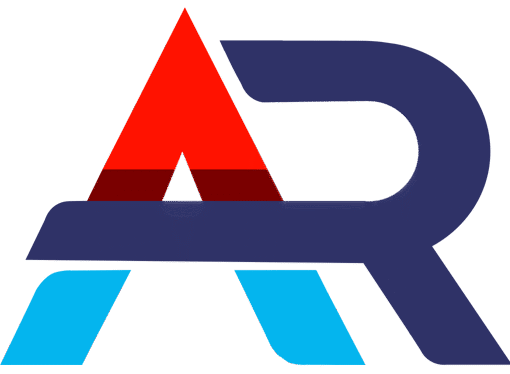WHAT IS PATENT MINING?
Patent mining refers to the systematic process of scanning, analysing, and extracting valuable information from patent documents. It involves researching into the vast collection of patents to identify emerging trends, inventive ideas, and technological breakthroughs. Patent mining offers a comprehensive understanding of the patent landscape, enabling businesses, inventors, and researchers to make informed decisions and gain a competitive edge.
Patent mining plays a fundamental role in several ways:
- Identification of High-Value Patents: Through patent mining, organizations can screen their patent portfolios to identify those patents with high commercial or technological value, making them prime candidates for licensing.
- Licensing Opportunities: Patent mining can reveal patents that aren’t core to a company’s current business strategy but might be valuable to others. These can be monetized through licensing to external parties.
- Avoiding Licensing Redundancies: By understanding one’s patent portfolio deeply, a company can avoid licensing technologies or solutions they already possess.
- Competitive Analysis: Patent mining allows businesses to understand competitors’ patent portfolios. This insight can reveal what technologies competitors are focusing on and whether there is an opportunity to license one’s patents to them or vice versa.
- Determining Licensing Rates: By assessing the technological significance and market relevance of a patent, patent mining can help in determining appropriate licensing fees or royalty rates.
- Technological Trend Analysis: Patent mining can reveal technological trends in an industry. Understanding these trends can guide licensing strategies by highlighting emerging areas of interest where licensing opportunities might grow.
- Gap Analysis: Mining can identify gaps or white spaces in the technological landscape where few patents exist. While this strategy assists in R&D strategy, it also helps in licensing by identifying areas where the company’s patents might have a competitive edge or where external patents might need to be licensed.
- Strengthening Negotiation Positions: When engaging in licensing negotiations, having in-depth knowledge about the patents in question (and their relevance in the market) can strengthen a company’s position,
- Reducing Litigation Risks: Patent mining can help in identifying potential infringement risks. Once identified, companies can opt for licensing as a strategy to mitigate the risk of costly litigations.
- Cross-licensing Opportunities: Comprehensive patent mining can help businesses identify potential partners for cross-licensing agreements, allowing mutual access to each other’s patented technologies.
WHAT ARE THE OBJECTIVES OF PATENT MINING?
The primary objective of patent mining is to leverage the vast amount of information contained within patent documents. This includes identifying previously unexplored areas of research, potential collaborations, and opportunities for innovation. By dissecting patent data, researchers can uncover valuable insights into market trends, competitor strategies, and areas ripe for exploration.
In conclusion, patent mining is a vital practice that allows researchers and organizations to extract valuable information and gain a competitive advantage in their respective industries. By exploring patent databases, valuable insights can be obtained to guide innovation, inform intellectual property strategies, and identify emerging trends.
WHAT ARE THE STEPS FOR PERFORMING PATENT MINING?
- The first step involves defining a specific focus area or technology domain. By narrowing down the scope, researchers can concentrate their efforts and maximize efficiency. Next, a comprehensive search is conducted across a variety of patent databases, utilizing specific keywords and classification codes related to the identified focus area. This step helps in identifying relevant patents for analysis.
Once the relevant patents have been collected, a thorough examination of the patent documents undertaken. This involves interpreting the information contained within the patent claims, descriptions, figures, and legal details. Valuable insights such as, technological trends, inventors’ names, assignees, and potential licensing opportunities from these complex documents are extracted.
Automated extraction of information from patent documents using natural language processing techniques is carried out in order to identify key concepts, technologies, and trends across a large corpus of patents.
Another important aspect of data mining in patent analysis is the analysis of citation networks. By analysing the citation patterns between patents, the relationships and influence between different technologies or companies are uncovered. This provide valuable insights into the innovation landscape and help identify emerging trends or potential collaboration opportunities.
- By examining the classification codes associated with patents, a deeper understanding of the technological domains in which patents are filed is gained. Legal status information, on the other hand, provides insights into the lifespan of patents and their potential impact on the market
- Furthermore, data visualization techniques can be employed to organize and present the extracted information in a digestible format. This step enhances the understanding of the patent landscape and aids in identifying patterns or correlations. These visualizations can be approached through various methods, such as citation maps, cluster analysis, or keyword network visualizations.
WHY CHOOSE ANTLIA:
- Using the knowledge of our patent experts combined with cutting-edge AI technologies, we provide a fast and accurate combined solution to assess patent invalidity.
- Experienced team of over 100+ experts in key-domains, such as, Analog and Digital Electronics, Opto-Electronics, HVACs, Autonomous vehicles, Audio and Video Electronics, Integrated Circuits and Electrical components, Semi-conductor devices, Medical Electronics, Artificial Intelligence, Control Systems, Signal and Image processing, Wireless technologies, Switch technology, Battery technology, Power systems, Solar Energy systems, Photovoltaic systems etc.
- Clear, easy-to-understand project reports based on expertise and client preferences. Reports highlight only relevant sections of prior art, omitting extraneous data. Each report details specific concepts, keywords, and classification codes searched. Capabilities to analyse and report in multiple languages including CN, JP, KR, FR and DE.
- Thorough examination of prior art across 20+ databases for uncovering a no-stone left unturned search.
- Flexible pricing tailored to diverse budgets and needs.
- Ongoing updates and consistent communication for better control over search direction.
- Multi-tier quality assurance throughout the project. Quality checks from the initial kick-off meeting to the project’s conclusion ensuring top-notch accuracy in strategy, relevancy, and reporting.



